51 Crown Street, Ipswich, Suffolk, IP1 3JA
This pub was purpose built in the 1930s as The Cricketers. From the 1930s, thirsty workers could drop in here. Originally a Tollemache pub, the style is copied from Helmingham Hall, the home of the Tollemaches since 1510. In 1957, Tollemache merged with another local brewery to form the company now known as Tolly Cobbold.
Prints and text about The Cricketers.
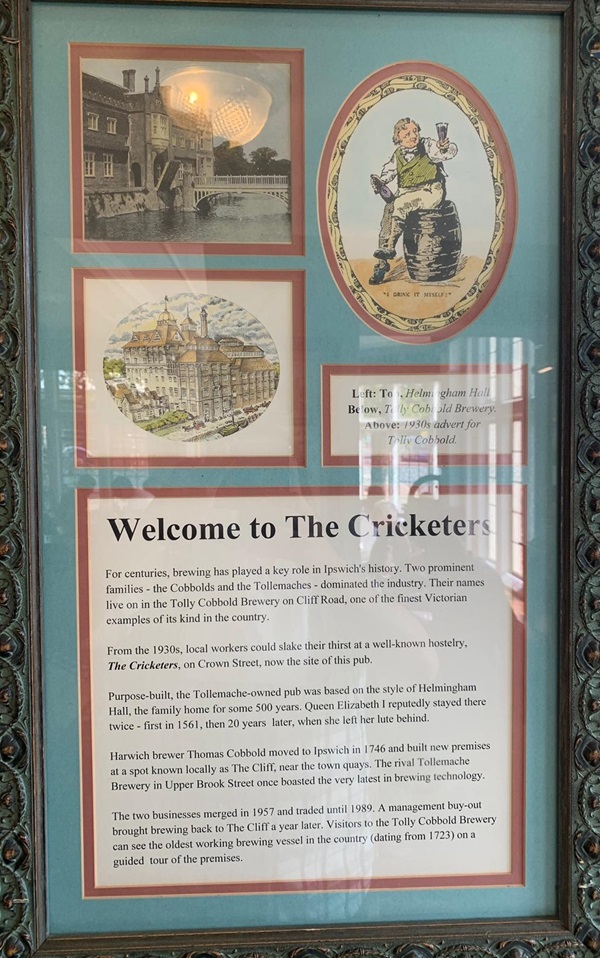
The text reads: For centuries, brewing has played a key role in Ipswich’s history. Two prominent families – the Cobbolds and the Tollemaches – dominated the industry. Their names live on in the Tolly Cobbold Brewery on Cliff Road, one of the finest Victorian examples of its kind in the country.
From the 1930s, local workers could slake their thirst at a well-known hostelry, The Cricketers, on Crown Street, now the site of this pub.
Purpose built, the Tollemache owned pub was based on the style of Helmingham Hall, the family home for some 500 years. Queen Elizabeth I reputedly stayed there twice – first on 1561, then 20 years later, when she left her lute behind.
Harwich brewer Thomas Cobbold moved to Ipswich in 1746 and built new premises at a spot known locally as The Cliff, near the town quays. The rival Tollemache Brewery in Upper Brook Street once boasted the very last in brewing technology.
The two businesses merged in 1957 and traded until 1989. A management buy-out brought brewing back to The Cliff a year later. Visitors to the Tolly Cobbold Brewery can see the oldest working brewing vessel in the country (dating from 1723) on a guided tour of the premises.
Illustrations and text about Margaret Catchpole.
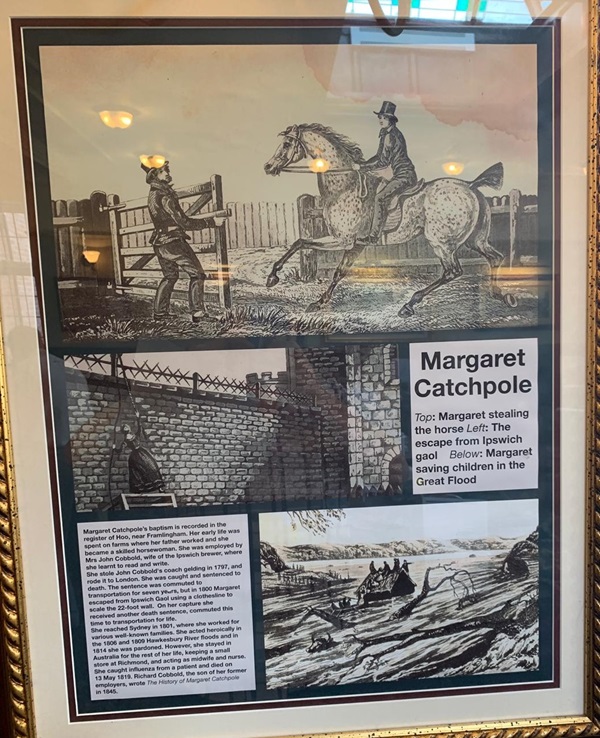
The text reads: Margaret Catchpole’s baptism is recorded in the register of Hoo, near Framlingham. Her early life was spent on farms where her father worked and she became a skilled horsewoman. She was employed by Mrs John Cobbold, wife of Ipswich brewer, where she learnt to read and write.
She stole John Cobbold’s coach gelding in 1797, and rode it to London. She was caught and sentenced to death. The sentence was commuted to transportation for seven years, built in 1800 Margaret escaped from Ipswich Gaol using a clothesline to scale the 22-foot wall. On her capture she received another death sentence, commuted this time to transportation for life.
She reached Sydney in 1801, where she worked for various well known families. She acted heroically in the 1806 and 1809 Hawkesbury River floods and in 1814 she was pardoned. However, she stayed in Australia for the rest of her life, keeping a small store at Richmond, and acting as a midwife and nurse. She caught influenza from a patient and died on 13 May 1819. Richard Cobbold, the son of her former employers, write The History of Margaret Catchpole in 1845.
An illustration and text about Christchurch Mansion and Mark.
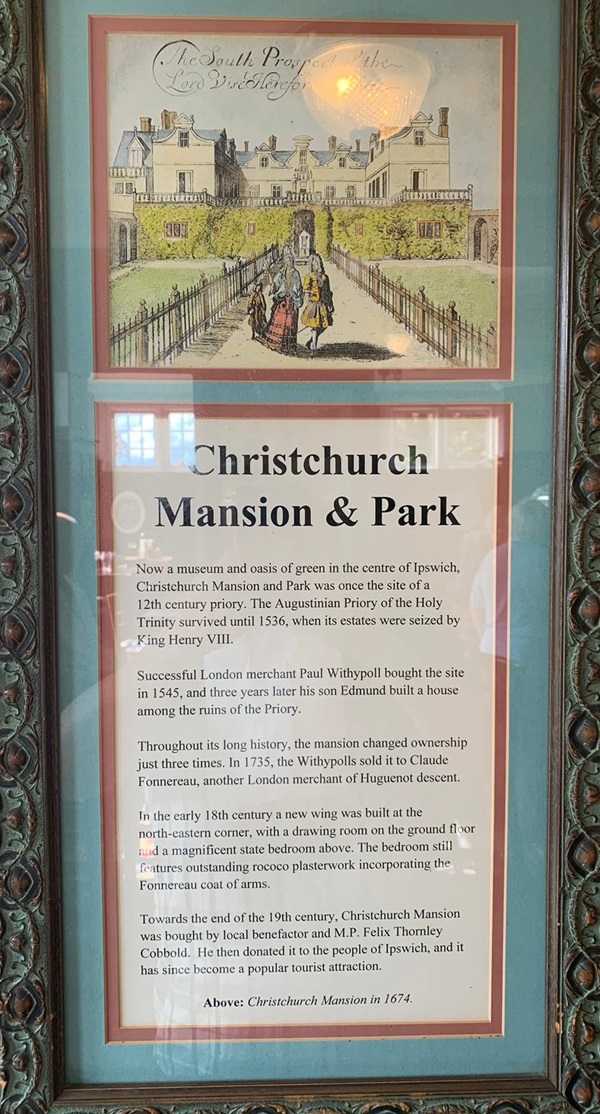
The text reads: Now a museum and oasis of green in the centre of Ipswich, Christchurch Mansion and Park was once the site of a 12 century priory. The Augustine Priory of the Holy Trinity survived until 1536, when its estates were seized by King Henry VIII.
Successful London merchant Paul Withypoll bought the site in 1545, and three years later his son Edmund built a house among the ruins of the priory.
Throughout its long history, the mansion changed ownership just three times. In 1735, the Withypolls sold it to Claude Fonnereau, another London merchant of Hugenot descent.
In the early 18th century a new wing was built at the northern eastern corner, with a drawing room on the ground floor and a magnificent state bedroom above. The bedroom still features outstanding rococo plasterwork incorporating the Fonnereau coat of arms.
Towards the end of the 19th century, Christchurch Mansion was bought by local benefactor and MP Felix Thornley Cobbold. He then donated it to the people of Ipswich, and it has since become a popular tourist attraction.
Above: Christchurch Mansion in 1674.
Prints and text about the Saxon settlement.
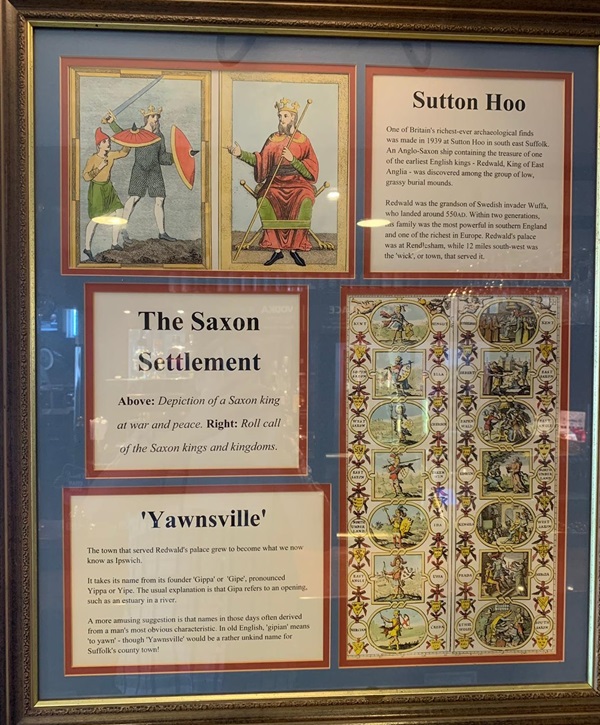
The text reads: One of Britain’s richest ever archaeological finds was made in 1939 at Sutton Hoo in south east Suffolk. An Anglo-Saxon ship containing the treasure of one of the earliest English kings – Redwald, King of East Anglia – was discovered among the group of low, grassy burial mounds.
Redwald was the grandson of Swedish invader Wuffa, who landed around 550AD. Within two generations, his family was the most powerful in southern England and was one of the richest in Europe. Redwald’s palace was at Rendlesham, while 12 miles south west was the wick, or town, that served it.
The town that served Redwald’s palace grew to become what we now know as Ipswich.
It takes its name from its founder Gippa or Gipe, pronounced Yippa or Yipe. The usual explanation is that Gipa refers to an opening, such as an estuary in a river.
A more amusing suggestion is that names in those days often derived from a man’s most obvious characteristics. In old English, gipian means to yawn – though Yawnsville would be a rather unkind name for Suffolk’s country town!
A photograph of the docks, Ipswich, 1930.
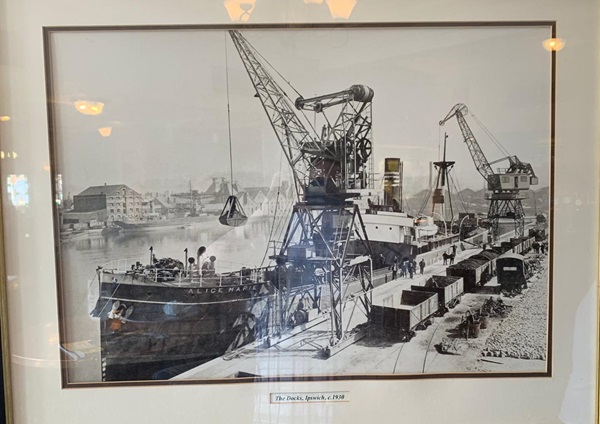
External photograph of the building – main entrance.
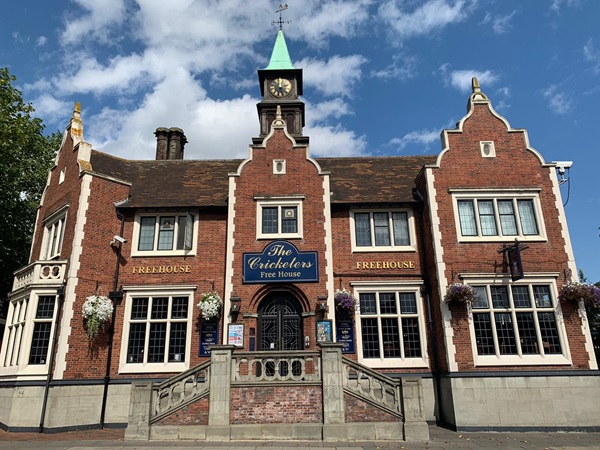
If you have information on the history of this pub, then we’d like you to share it with us. Please e-mail all information to: pubhistories@jdwetherspoon.co.uk